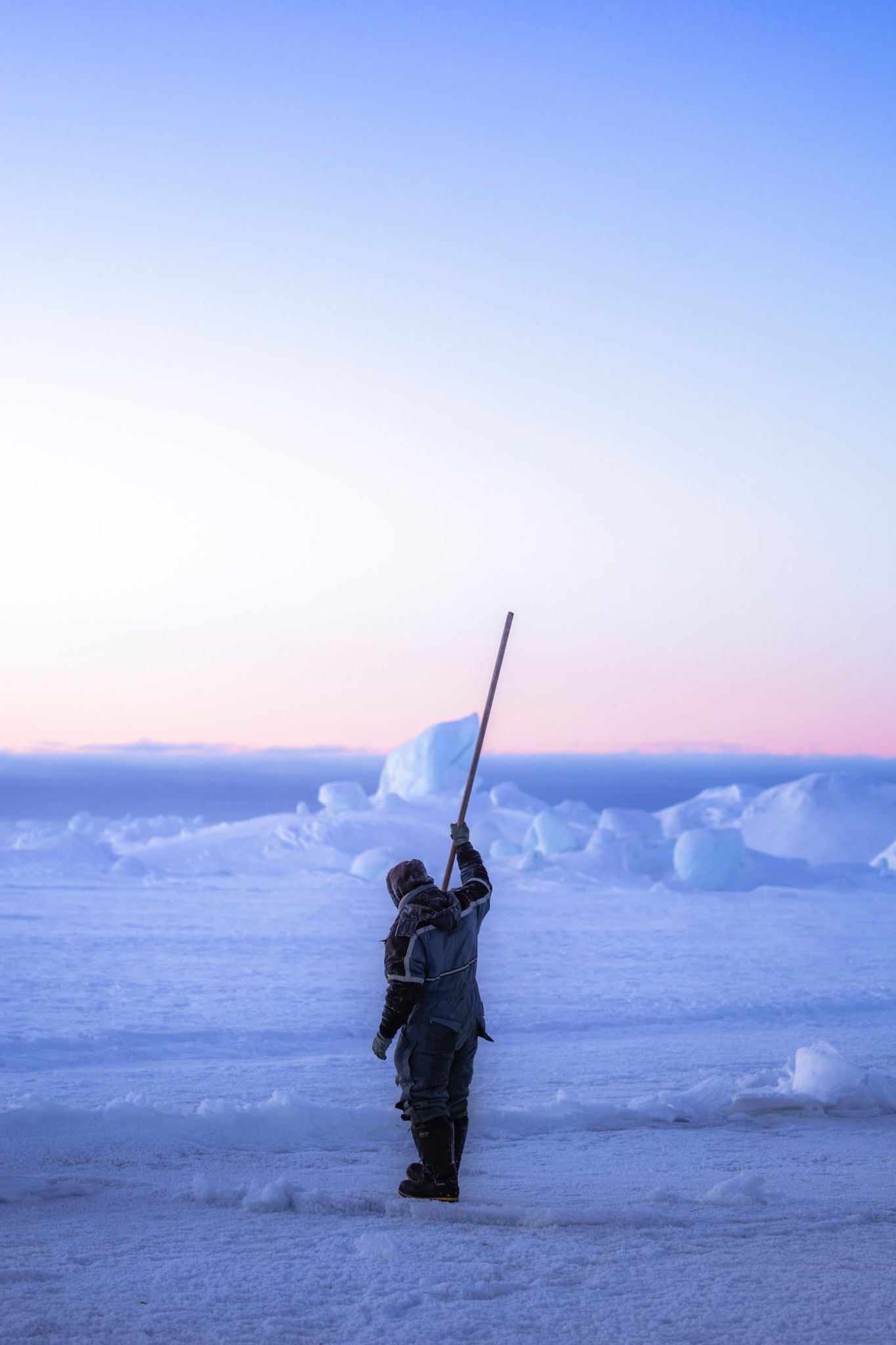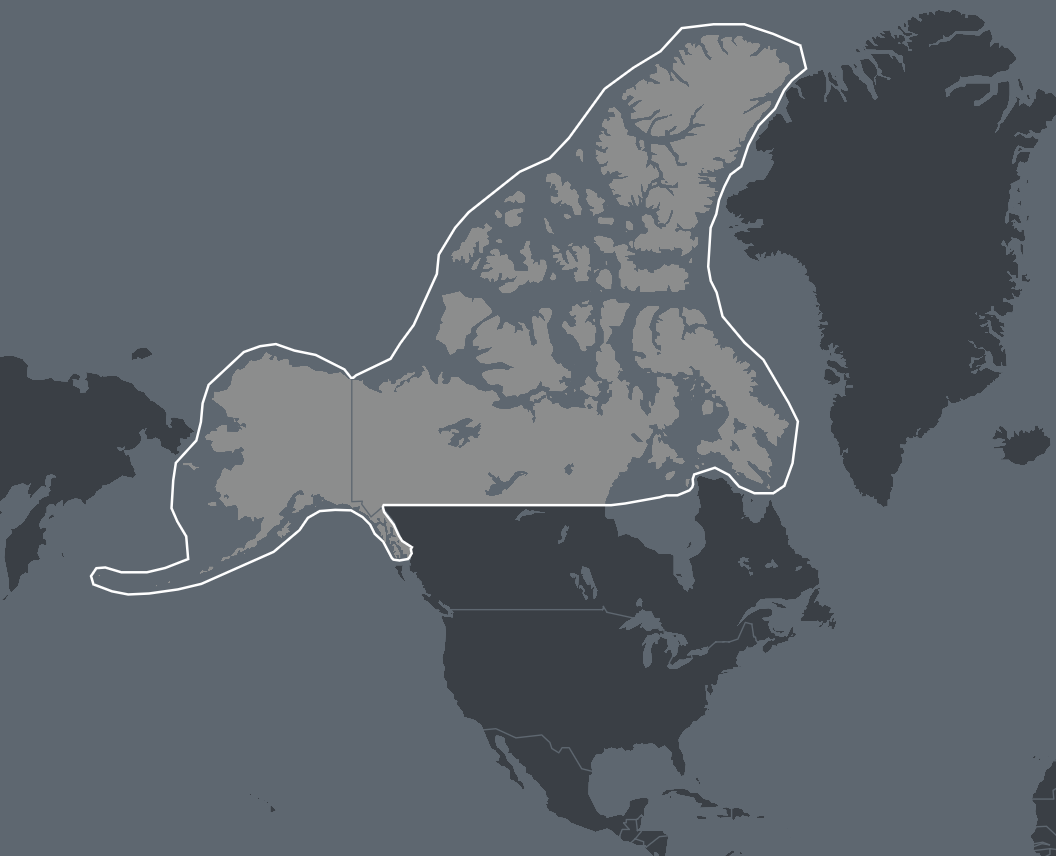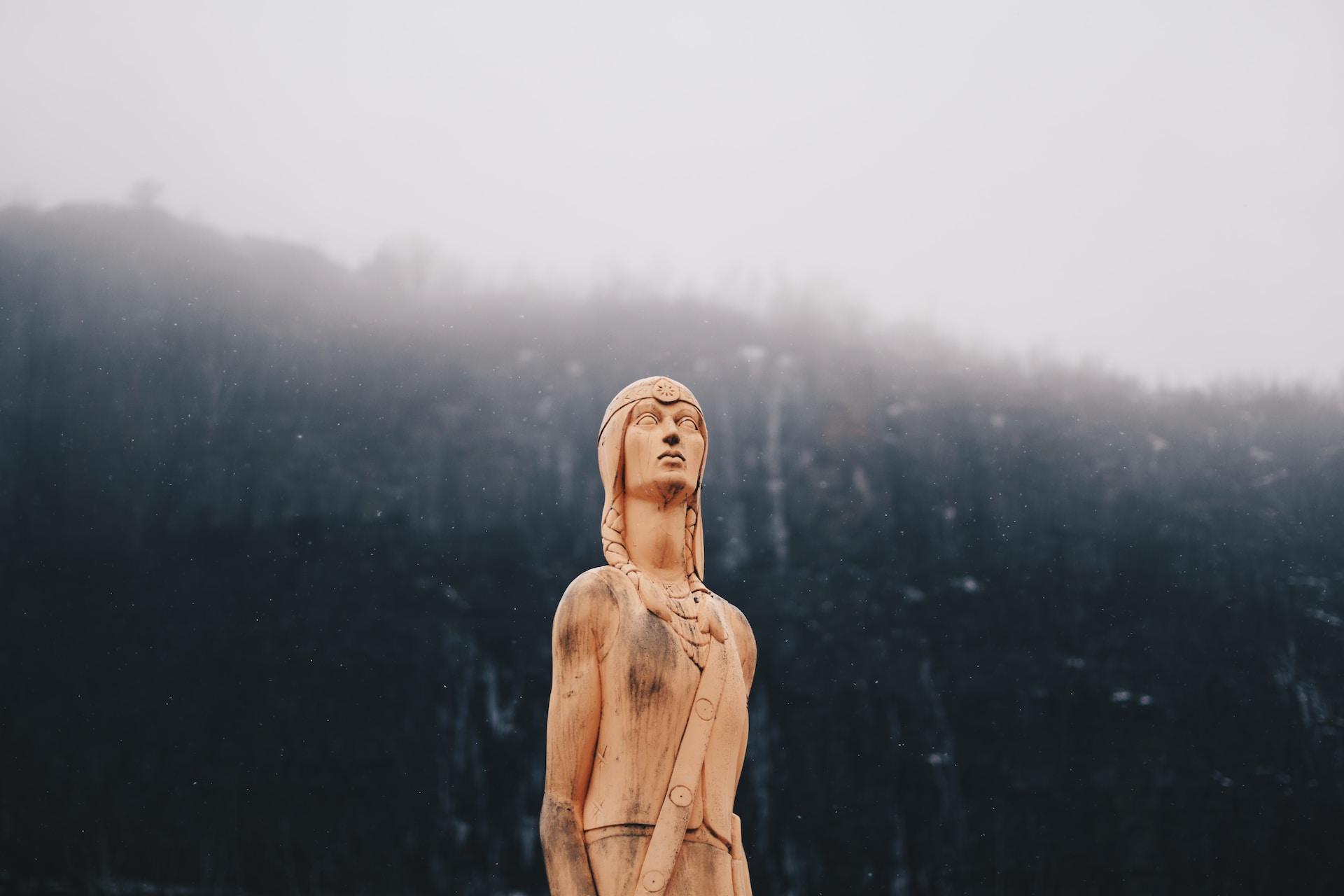What is Indigenous Americas-Arctic DNA Ethnicity on Ancestry?
We will be looking more closely at the Indigenous Americas Arctic DNA region. The aim being to look at where it is and who the indigenous people of that region were. So to find out more about your DNA ancestors of this region read on.
History of Humans in the Americas
The Land Bridge
Although there is no exact date for when humans first arrived in the Americas there are several prevailing theories. The most common one of course being the land bridge theory. During the last ice age between 19,000 – 8700 BC, sea levels were 100 feet below the modern-day levels. This was due to vast quantities of water being frozen in glacier form.
During that last ice age, the Bering sea as we know it today was actually a land bridge reaching all the way to Siberia. It is thought that around 14,000 years ago stone age hunters and gatherers followed game across this land bridge and became the first humans to settle within the Americas.

It is also believed that gradually these settlers then headed deeper into the Americas, traveling south in small groups. Due to the ongoing effects of the ice age these groups remained small because conditions were not conducive with large settlements or nomadic tribes.
Today's Indigenous peoples likely descend from a now-vanished ancient group known as the Paleo-Siberians. In DNA testing Indigenous Americas DNA has little in common with modern-day Siberians but in 2019 a 10,000 year old skeleton found in Siberia did show notable similarities to modern-day Native peoples in the Americas.
Indigenous Americas Arctic DNA Region
The Indigenous Americas Arctic DNA region as the name suggests is just that; it is an arctic region, much of which sees extreme cold conditions for a significant portion of the year. Within this region of the North American continent you will find the US state of Alaska and a huge area of Northern Canada expanding northeast as far as Ellesmere Island just across the Nares Strait from Greenland.
Indigenous Peoples of Canada
The modern day indigenous peoples of Canada are the First Nations, Inuit and Metis groups. They are all likely connected historically but have developed into distinct peoples over time. We are going to take a look at all three groups to help explain more about the Indigenous Americas Arctic DNA Region.

First Nations
As mentioned tens of thousands of years ago indigenous groups from Siberia likely found their way across the land bridge finding an area in what we know as Alaska which at that time would have been ice-free due to lower snowfall.
During this era the regions to the east of Alaska in what is modern day Northern Canada would have been covered in a vast ice sheet precluding movement in that direction. They would remain in the Alaska region living a localized nomadic lifestyle until eventually the glaciers started to melt, opening up the way to head south and of course east into Canada.

It is estimated the first inhabitants in Northern Canada likely arrived at least 14,000 years ago. They would have followed the migration of huge prey animals such as giant beavers, musk ox and mastodons. Those heading south would make their way into the regions we know as the United states today as well as both Central and South America. The groups moving east however would spread out through the lands of Northern Canada including the arctic islands to the east of the country.
The earliest peoples thrived as the glaciers withdrew and over thousands of years developed. They eventually reached a point whereby the First Nations peoples had created a trade route system across Canada by 500 BC – 1000 AD.
As with the Native American tribes to the south these First Nations peoples lived in nomadic tribal groups. Along the Pacific coast were the:
- Haida
- Tsimshian
- Salish
- Kwakiutl
- Nuu-chah-nulth
- Nisga'a
- Gitxsan
In the plains were the:
- Blackfoot
- Kainai
- Sarcee
- Northern Peigan
In the northern woodlands were the:
- Cree
- Chipewyan
Around the Great Lakes were the:
- Anishinaabe
- Algonquin
- Iroquois
- Wyandot
Along the Atlantic coast were the:
- Beothuk
- Maliseet
- Innu
- Abenaki
- Mi'kmaq.
Inuit
The Inuit are considered the descendants of a specific group that developed in Alaska known as the Thule people. They emerged in western Alaska around 1,000 and had already split from the related Aleut group around 4,000 years ago.
This group spread eastwards across the arctic displacing the related Dorset culture known as the Tunlit. This was the last major paleo-Eskimo culture in the region. The Inuit’s in their legends describe the Tunlit as giants who were taller and stronger than they were. Whether this was true or not experts are convinced that the Inuit had an advantage of their own through the use of dogs as transport animals.

The Inuit also had developed larger weapons and other tool advancements that the Tunlit did not possess. The advance of the Inuit would not be stopped and within a century they had reached as far as Greenland where some groups settled.
The Metis Peoples
The Metis peoples are a group who actually fall south of the Indigenous Americas Arctic DNA region. They make their home in Canada's prairie provinces so although they are related to the First Nations and Inuit groups the DNA region as found on Ancestry does not extend into their territory.
Descending from First Nations groups, the Metis arose in connection with European influences, specifically French. The proliferation of the North American fur trade saw many French fur hunters arrive on the plains and in the forests of Canada where their own nomadic lifestyle matches with that of the indigenous peoples.
The term Metis is French and literally translates as a person of mixed parentage. This accurately depicts the intermarriage between the local indigenous peoples and the European trappers.
Forced Assimilation
Starting in the late 18th century the growing European culture in Canada saw the government start an initiative of assimilation indigenous peoples such as the First Nations and Inuit into the so-called “Canadian Culture.” These initiatives would reach a height in the late 19th through early 20th centuries with authorities pushing for complete assimilation and subjugation.
The treatment of the Native peoples of Canada may not be as well recorded globally as that which occurred in the United States or in South America but the atrocities that occurred during this time were no less shocking. Some of the Christianization initiatives enacted continued well into the 1990s.
How Did You Inherit Indigenous American DNA?
It is important to note that due to the small number of original humans that likely crossed the land bridge and thousands of years of isolation, Indigenous DNA is very distinct.
Interactions between the tribes of North America and the incoming European settlers sometimes led to intermarriage. As a result indigenous DNA could be part of a person's DNA generations later without there being an obvious reason for it.
Depending on how high your percentage of Indigenous American DNA is, its origins can vary. If you have a high percentage you may have a recent ancestor who was 100% Indigenous. Often if this is the case you would likely have some idea of this.
In lower percentages of Native DNA, it might be an indication of a more distant unknown indigenous ancestor. In order to discover this connection, you may have to do some deep research to try and pinpoint at what point that DNA entered your family tree.
Final Thoughts
The Indigenous peoples of the arctic regions of North America are descended from some of the first humans to cross onto the continent. Their ancestors hunted huge long extinct animals and many groups today still rely on hunting. So much so that under law certain hunting activities can only be undertaken by those of indigenous descent in the region.
Despite attempts to force assimilation by local governments indigenous societies in the region still hold onto their traditions. Their life in these far north regions can be harsh but they are resilient people.
Link To or Reference This Page
We spent a lot of time downloading, cleaning, merging, and formatting the data that is shown on the site.
If you found the data or information on this page useful in your research, please use the tool below to properly cite or reference Name Census as the source. We appreciate your support!
-
<a href="https://namecensus.com/blog/what-is-indigenous-americas-arctic-dna-ethnicity-on-ancestry/">What is Indigenous Americas-Arctic DNA Ethnicity on Ancestry?</a>
-
"What is Indigenous Americas-Arctic DNA Ethnicity on Ancestry?". NameCensus.com. Accessed on May 2, 2024. https://namecensus.com/blog/what-is-indigenous-americas-arctic-dna-ethnicity-on-ancestry/.
-
"What is Indigenous Americas-Arctic DNA Ethnicity on Ancestry?". NameCensus.com, https://namecensus.com/blog/what-is-indigenous-americas-arctic-dna-ethnicity-on-ancestry/. Accessed 2 May, 2024
-
What is Indigenous Americas-Arctic DNA Ethnicity on Ancestry?. NameCensus.com. Retrieved from https://namecensus.com/blog/what-is-indigenous-americas-arctic-dna-ethnicity-on-ancestry/.
